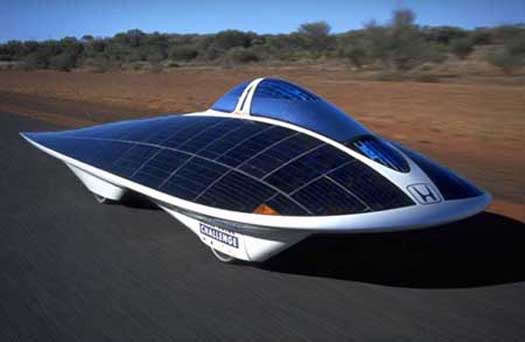Solar car racing may not be as popular as the Indy 500 but the participants and event goers have increased significantly since its initial debut in 1985. The Tour de Sol, which served as the first race, began in Switzerland and lasted 5 days. There were 72 cars that participated; unfortunately 20 of them didn’t make it to the finish line. By 1990 the event expanded and included separate events, one of which involved a course over Switzerland’s frozen lakes and mountain passes.
Now, Universities and even some high schools participate in the event from the U.S. to Europe to Australia. The universities use the opportunity to develop student’s engineering and technological skills. Universities from North America submit their designs in hopes of being admitted into the American Solar Challenge. The original race (called Sunrayce USA) was sponsored by General Motors in 1990 and started at Disney World and surprisingly enough, ended at the GM technical center in Michigan. The route changes each year; most recently the 1,100 mile course started in Tulsa OK and ended in Naperville, IL.

The race has even become an opportunity for Corporations to gain exposure in an environmentally conscious light. Toyota sponsored the longest race (2,400 miles) to date in 2008 that when from Plano, Texas to Calgary in Canada. Sponsorship, however, has not always occurred without hurdles. In fact, once the U.S. Department of Energy stepped down from sponsorship in 2005 the race was nonexistent for the two years following until Toyota stepped in.
Each team is responsible for designing, building and driving the car for the race. For the exceedingly successful teams, the next event takes place on a global stage: The World Solar Challenge. The course is fixed in Australia covering roughly 1,800 miles through the Australian Outback.
There are many overlooked components that go into the actual build of the car itself. For example, the panels have to be directed perpendicularly to the sun for optimal efficiency. Competitors are only allowed to have 5kW of stored energy which means once the sun goes down, tents are pitched and the racers are forced to retire until daylight allows them to start their engines. The teams must consist of a minimum of two and a maximum of four people. If the weight of a driver is less than 180 pounds a ballast will be added to make up the difference. Solar powered cars are often considered slow, but surprisingly enough, several teams were handicapped by the 68 mph speed limit. The winner of the first Solar World Challenge won with an average speed of 42 miles per hour; in 2009 the Japanese winners average 62 miles per hour.
As the technology progresses and efficiency continues to increase, solar powered cars continue to make their way closer to the mainstream. Here’s to the 2011 competitors!
 Follow
Follow